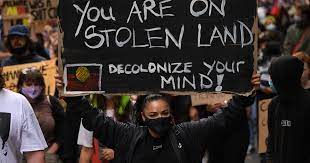Sexism and misogyny in Australian politics - Australia
- makfor9
- 22 giu 2021
- Tempo di lettura: 4 min
Aggiornamento: 11 nov
Australia elected its first woman office Prime Minister, Julia Gillard, in 2010. Her
time in office was shrouded by an onslaught of sexism and misogyny that called into
question the treatment of women in Australia’s parliament. More than 10 years
later, woman in Australian politics continue to endure sexist behaviour, gendered
double standards and the most extreme of sexual harassment and assault.
In 2012, two years after she was elected as leader, Julia Gillard was challenged by
opposition leader Tony Abbott to sack the Speaker of Parliament, Peter Slipper,
over a misogynistic text Slipper had sent. Abbot proceeded to talk down at Gillard,
lecturing her about sexism and misogyny and how she was seemingly accepting its
presence within her political party. They were words from Abbott that deflected
attention away from his own blatant sexism and misogyny towards Gillard. It was
the latest instance of sexist behaviour and double standards exhibited by Abbott,
and this time Gillard had had enough.
She sat writing notes while Abbott spoke, and by the time he was finished, she had
written a speech that would define her prime ministership and be regarded as the
most unforgettable moment of Australian television history.
She stood up, and delivered her speech, opening with ‘I say to the Leader of the
Opposition (Abbott) I will not be lectured about sexism and misogyny by this man. I
will not. And the Government will not be lectured about sexism and misogyny by
this man. Not now, not ever.’
Becoming famously known as the ‘misogyny speech’, Gillard exposed the blatant
double standards when it comes to sexism and misogyny directed at her, and
women at large, by Abbott, his party and the larger Australian political system. She
emphasised that Abbott was offended by Mr Slipper’s text message, however, he
himself had a history of repulsive and blatant sexism and misogyny. Including
during an interview about the blatant underrepresentation of women in
institutions of power in Australia, where Abbott replied, ‘but now, there is an
assumption that this is a bad thing’.
It shone a light on the treatment of women at large within Australian politics, and
how Gillard was judged by a different standard to the men she worked with. For
the 3 years that Gillard was Prime Minister (and notably, there hasn’t been a
woman elected as Prime Minister since), she was criticised for her clothes, the
shape of her body, her haircut, the tone of her voice and the fact she doesn’t have
children. When she was firm, she was seen as unbecoming. But when she preferred
negotiation, she was seen as weak. However, nearly 10 years after Gillard’s
speech, women in Australian politics continue to experience the worst of sexism,
misogyny and gendered double standards.
In 2017, politician Larissa Waters become the first woman to breastfeed her child
in Australian parliament. It was met with mixed public opinion, but most notably,
it highlighted a double standard regarding woman politicians who are also mothers.
Larissa Waters, as a politician and mother of two young children, was often
criticised for how she’ll manage both her job and motherhood, and how her
children will cope with her working. She called out this double standard, saying
that ‘no one would ever ask Scott Morrison how his kids are going to cope with him
working.’
Scott Morrison, Australia’s current Prime Minister, has recently come under
criticism for his own treatment of women in Parliament. In February this year,
Brittany Higgins, a former Parliament staffer, publicly alleged that she was raped
in 2019 inside Parliament House by a male colleague. The Australian public was
now aware of the most disgraceful treatment of women that was occurring in
Parliament. Morrison was publicly ridiculed for his handling of the allegation,
especially after saying his wife helped him realise the extent of the problem, after
she told him to consider the issue as the father of two girls. Many rightfully
declared that Morrison should have been able to realise how serious the issue was,
irrespective of the fact he is a father.
He also received criticism for his simultaneous handling of a rape allegation made
against former Attorney General of Australian, Christian Porter. Porter was
removed from the role by Morrison, but was granted another position of power and
authority in the Australian Government.
These examples offer only a small insight into the wider treatment of women in
Australian politics. However, these are examples that are embedded in a culture of
sexism and misogyny that is alive and enduring. Australian politics has long been a
space made for men by men. It privileges men and their masculinity, while
ostracising anyone else. It is no surprise that men in politics are therefore
expected to be masculine, and demonstrate assertiveness, ambition and strength.
While women, and any feminine traits, are weak. This is a culture so deeply
embedded in the Australian political system that it permeates into the everyday
operations of Australian politics, where even our woman Prime Minister can’t do
her job without an onslaught of sexism and misogyny. Women are not encouraged
to take up any political space, and these examples serve as a stark reminder of the
marginalised place women hold in Australian politics.




Commenti